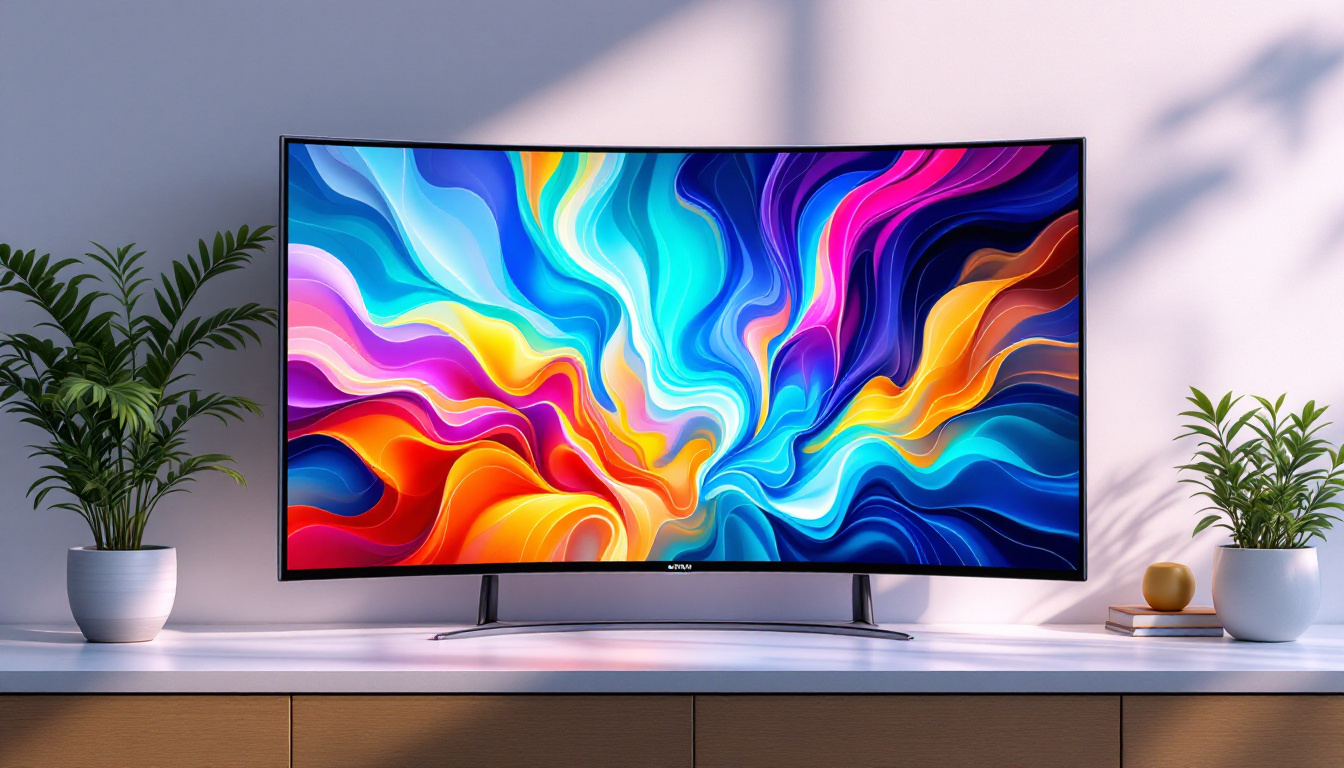What Does LCD Mean: LED Display Explained
In today’s digital world, screens are everywhere—from smartphones and laptops to televisions and digital billboards. Yet, many people often confuse the terms LCD and LED when discussing display technologies. Understanding what LCD means and how LED displays relate to it is essential for making informed decisions when purchasing devices or simply appreciating the technology behind the screens we use daily.
This article delves into the meaning of LCD, the role of LED in displays, and how these technologies work together to produce the vibrant images we see. It also explores the differences between LCD and LED displays, their advantages, disadvantages, and the latest trends shaping the future of screen technology.
Understanding LCD: What Does It Mean?
The Definition of LCD
LCD stands for Liquid Crystal Display. It is a flat-panel display technology that uses liquid crystals combined with polarizers to control the passage of light and produce images. Unlike older cathode ray tube (CRT) monitors, LCDs are thinner, lighter, and more energy-efficient, making them the dominant technology in screens today.
How LCD Technology Works
At its core, an LCD screen consists of several layers. The liquid crystals themselves do not emit light but act as light modulators. When an electric current passes through these crystals, they align in such a way that they either block or allow light to pass through. This modulation creates the images we see on the screen.
Behind the liquid crystal layer is a backlight, which provides the necessary illumination. Initially, cold cathode fluorescent lamps (CCFLs) were used as backlights, but modern LCDs typically use LED backlighting for better brightness and energy efficiency.
Common Uses of LCD Technology
Since its inception in the 1970s, LCD technology has revolutionized display screens. It is now used in a wide range of devices, including:
- Smartphones and tablets
- Laptops and desktop monitors
- Televisions
- Digital watches and calculators
- Instrument panels in vehicles and aircraft
The versatility and efficiency of LCDs have made them the standard choice for most display applications.
What Is an LED Display? Clarifying the Confusion
LED: Light Emitting Diode Explained
LED stands for Light Emitting Diode, a semiconductor device that emits light when an electric current passes through it. LEDs are used in various applications, from indicator lights to large-scale lighting solutions. In the context of displays, LEDs serve two primary functions:
- As backlighting for LCD screens
- As individual pixels in LED displays (often called direct-view LED or OLED screens)
LED as Backlighting for LCDs
When people refer to LED TVs or LED monitors, they are usually talking about LCD screens that use LED backlighting instead of older CCFL backlights. This means the display panel is still an LCD, but the light source behind it is composed of LEDs.
LED backlighting offers several advantages over CCFL, including:
- Lower power consumption
- Thinner and lighter screens
- Improved brightness and contrast
- Better color accuracy
- Longer lifespan
Direct-View LED Displays
Separate from LCDs with LED backlights are direct-view LED displays, where each pixel is an individual LED. This technology is commonly used in large outdoor screens, stadium displays, and increasingly in premium televisions through OLED (Organic LED) technology.
Unlike LCDs, direct-view LED displays do not require backlighting because the LEDs themselves emit light. This allows for deeper blacks, higher contrast ratios, and faster response times.
Comparing LCD and LED Displays
Key Differences
Understanding the differences between LCD and LED displays is crucial for consumers and professionals alike. Here are the primary distinctions:
| Feature | LCD (with CCFL Backlight) | LED (LCD with LED Backlight) | Direct-View LED (including OLED) |
|---|---|---|---|
| Light Source | Cold Cathode Fluorescent Lamps | Light Emitting Diodes | Individual LEDs per pixel |
| Thickness | Thicker | Thinner | Varies, often very thin (OLED) |
| Power Consumption | Higher | Lower | Lowest (especially OLED) |
| Contrast Ratio | Lower | Improved | Highest |
| Color Accuracy | Good | Better | Excellent |
| Price | Generally lower | Moderate | Higher |
Which Display Is Better?
The answer depends on the intended use and budget. For everyday use, LED-backlit LCDs offer an excellent balance of quality and affordability. For professional graphic work, gaming, or home theater enthusiasts, direct-view LED displays such as OLEDs provide superior image quality.
Advantages and Limitations of LCD and LED Displays
Advantages of LCD Displays
LCDs have been the backbone of display technology for decades. Some of their key benefits include:
- Energy Efficiency: Compared to older CRT monitors, LCDs consume significantly less power.
- Compact Design: Their thin profile makes them suitable for portable devices and slim TVs.
- Reduced Eye Strain: LCDs generally flicker less than CRTs, contributing to less eye fatigue.
- Cost-Effectiveness: Mass production has reduced costs, making LCDs affordable for consumers.
Limitations of LCD Displays
Despite their popularity, LCDs have some drawbacks:
- Limited Viewing Angles: Colors and contrast can degrade when viewed from sharp angles.
- Lower Contrast Ratios: Blacks may appear grayish due to backlight bleed.
- Response Time: Some LCDs have slower response times, causing motion blur in fast-moving images.
Advantages of LED Displays
LED technology has enhanced display performance in several ways:
- Improved Brightness and Contrast: LED backlighting allows for better control of light, enhancing picture quality.
- Energy Savings: LEDs consume less power than CCFLs, contributing to longer battery life in portable devices.
- Longer Lifespan: LEDs generally last longer and are more durable.
- Enhanced Color Range: LED displays can reproduce a wider gamut of colors.
Limitations of LED Displays
While LED displays offer many benefits, they are not without challenges:
- Cost: High-quality LED and OLED displays can be expensive.
- Potential for Burn-In: Especially with OLEDs, static images can cause permanent marks over time.
- Complex Manufacturing: Producing consistent LED panels requires advanced technology and quality control.
The Evolution and Future of Display Technologies
From LCD to LED and Beyond
The journey from traditional LCDs to LED-backlit LCDs marked a significant leap in display technology. The transition improved energy efficiency, picture quality, and design flexibility. More recently, direct-view LED technologies like OLED and MicroLED have pushed the boundaries even further.
OLED displays, which use organic compounds that emit light when electrified, offer exceptional contrast ratios and color accuracy. MicroLED, an emerging technology, promises the benefits of OLED without some of its drawbacks, such as burn-in.
Emerging Trends and Innovations
Several exciting developments are shaping the future of displays:
- Flexible and Foldable Screens: Advances in OLED and AMOLED technologies enable bendable devices like foldable smartphones and rollable TVs.
- Higher Resolutions and Refresh Rates: 4K, 8K, and beyond, with refresh rates exceeding 120Hz, are becoming standard for gaming and professional use.
- Energy-Efficient Displays: New materials and designs aim to reduce power consumption further, critical for mobile and wearable devices.
- Augmented and Virtual Reality: Specialized displays with ultra-high resolutions and low latency are vital for immersive experiences.
What Consumers Should Know
When choosing a display, understanding the underlying technology helps in selecting the right device for specific needs. It is essential to consider factors such as:
- Intended use (gaming, professional work, casual viewing)
- Budget constraints
- Desired screen size and resolution
- Portability and power consumption
- Brand reputation and warranty
By evaluating these aspects alongside the differences between LCD and LED technologies, consumers can make informed decisions that maximize satisfaction and value.
Conclusion: Demystifying LCD and LED Displays
In summary, LCD stands for Liquid Crystal Display, a technology that manipulates light through liquid crystals to create images. LED, or Light Emitting Diode, often refers to the backlighting method used in modern LCD screens, enhancing their brightness and efficiency. Additionally, direct-view LED displays, including OLEDs, represent a different class of technology where each pixel emits its own light.
Understanding these distinctions is crucial in navigating the vast array of display options available today. Whether purchasing a new television, monitor, or mobile device, knowing what LCD and LED mean and how they impact performance can lead to smarter choices and better user experiences.
As display technologies continue to evolve rapidly, staying informed will help consumers and professionals alike appreciate the innovations that bring images to life with stunning clarity and color.
Explore Cutting-Edge LED Displays with LumenMatrix
Ready to experience the future of display technology? LumenMatrix is at the forefront of LED innovation, offering a wide array of advanced LED display solutions that cater to every need. From vibrant Indoor and Outdoor LED Wall Displays to dynamic Vehicle and Sports LED Displays, our products are designed to captivate and engage. Discover the transformative power of LED Poster Displays, Floor LED Displays, Custom LED Displays, All-in-One LED Displays, and LED Transparent Displays. Elevate your visual communication and make a lasting impression with LumenMatrix’s state-of-the-art LED modules. Check out LumenMatrix LED Display Solutions and join the revolution in visual storytelling.































